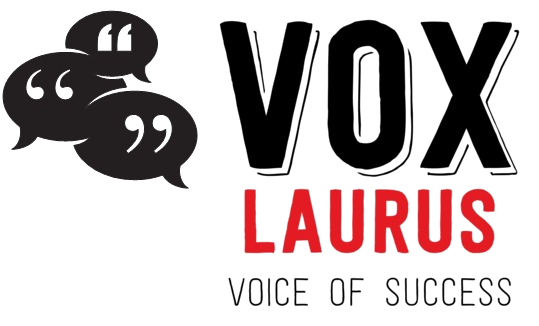 When I seek out people to interview for my blog, I am generally looking for individuals who have taken a huge risk in abandoning the relative security of a 9 to 5 job to strike out on their own. They stand the chance of not having a regular pay check if things go sour, but forge ahead anyway because they want to pursue their passion. That takes a certain brand of chutzpah, in my opinion.
When I seek out people to interview for my blog, I am generally looking for individuals who have taken a huge risk in abandoning the relative security of a 9 to 5 job to strike out on their own. They stand the chance of not having a regular pay check if things go sour, but forge ahead anyway because they want to pursue their passion. That takes a certain brand of chutzpah, in my opinion.
So I bent my own rules a bit in interviewing Tim Errickson, artistic director for Boomerang Theatre Company, a nonprofit rotating repertory theater based in New York City. Tim works full-time as an executive assistant for a large financial services company in Manhattan. However, he has spent nearly 15 years successfully overseeing the artistic direction of Boomerang while keeping his day job — not an easy task.
Find out how Tim manages to do it all and how his corporate job informs his theater work. Be sure to read Tim’s bio at the end of this interview.
1) Tell me more about The Boomerang Theatre Company, its history and mission:
I was freelance directing around NYC, getting jobs here and there. I had been fired from a job directing a production of A Midsummer Night’s Dream through, what I thought, was no fault of my own. Maybe it was, but I don’t think it was. I got really frustrated with the idea that someone else was going to tell me when I could work or not work.
Years earlier, I had gotten a chance to go to England for my junior year of college. While I was there I spent a lot of time at the Royal National Theatre of Great Britain, which is a large, three-theater building that runs anywhere from six to eight shows at a time. They run them in a format called rotating repertory. You might have three theaters, but in each theater there could be three shows running, and they would rotate. So on Monday you might see Hamlet, on Tuesday you might see Waiting for Godot, on Wednesday you might see The Importance of Being Earnest. That’s in one physical theater. I was always fascinated by that idea.
When I was fired from Midsummer and was looking for something to do, I decided I was going to try to start a company that had rotating repertory as its core component. The reality is small theater, what’s been dubbed as off-off Broadway or independent theater, always struggles with an economic, uphill climb. The idea of trying to make three shows happen became daunting. It suddenly occurred to me there might be a model that could allow you to realize some savings by ruling out things you wouldn’t have to buy three of every time. As a result, you could get three shows up for the cost of maybe 1 ½. That was a model that seemed to take hold, so we just kept doing that. That first year in 1999 we did three plays and was the genesis of the company.
An attractive element to it is that artists — actors, designers, whatever — can work on multiple projects simultaneously. There is an idea you can belong to something larger than what you might normally get if you were signing onto something else.
Also, a rotating repertory [supports] this idea that plays of different eras can talk to each other in a way that seeing Hamlet in July and Waiting for Godot in August wouldn’t allow. You can put things together and essentially make a larger piece of work. It’s almost as if Hamlet is chapter one, Godot is chapter two, and Earnest is chapter three. When they line up together like that, they bleed into each other in a way that makes the experience of seeing them unique and different for an audience member. From an audience standpoint, that was the mission.
2) You currently juggle two jobs. You have your day job as an executive assistant and then your rest-of-the-time job as artistic director of the theater and as a playwright. How much of your time do you devote to your theater work?
On an average week I will work my 45-50 hour day job and then in the evenings and on the weekends I will be at rehearsal, or at readings, or working on various fundraising agendas and projects.
It’s a juggling act, certainly. When we’re busier here at work, my brain is filled with so many things that when I get home it’s not as easy to take that hat off and shift into theater hat. In general, I’ve been able to balance the two things pretty well. In a perfect world, the theater job would pay for itself, but I enjoy my day job very much. In the same way that plays can inform each other, from a business standpoint, working for a large financial services company, i.e. thinking of things at a macro level versus a micro level, has informed how I work in my nonprofit job. So there is value in having a job that isn’t just concerned with artists and ticket sales, but that is also concerned with growth and succession planning and, especially working in human resources, what is the most benefit you can provide to artists who work for you. It’s actually been great, in that respect.
3) As the artistic director of the theater, what are your main duties?
The biggest job is season planning — artistic development and season planning. I spend a good deal of my time working on programming: picking out which plays to do, where we might do them and which spaces fit them the best, timing in terms of where they would fall during the year, and where we can actually produce them in terms of other projects.
A lot of my time is also spent reading scripts and selecting work that perhaps isn’t finished, but we’re interested in, or a writer we’re interested in so we can further develop a relationship with them. Going to see plays, seeing what the talent pool is at a given moment. Taking meetings, seeing who is working on projects and what they’re interested in and seeing if that would fit in with what we’re planning to do this year, next year, and so on. That’s a big chunk of my artistic director job.
I also have a hand in fundraising. My managing director and I work on grants together. Due to the artistic side of it, I have to be able to represent for the grantors what our artistic mission is and what our vision is going forward, so that when we apply for funding we don’t just say, “Give it to us because we’re great.” Instead it’s, “Give it to us because we’re going to do X, Y, and Z and we’re doing X, Y, Z because they hit on these touchstone moments.” So my role in fundraising is to be able to present the vision coherently and get people excited about what they might be able to see and experience if they do back our endeavors.
In addition, I spend a good amount of time on marketing and audience development, insofar as we’re trying to get funding, we’re trying to get the projects up, but ultimately we need people to come see them. I make sure that our e-blasts, our art, our season brochures all speak in the same voice as they connect directly to the work.
4) What do you enjoy about being the artistic director of The Boomerang Theatre Company? What are some of the challenges you face?
[As an actor], one of the things you lack is the ability to control many of the things that go on around you. You may audition for something, something you think you’re totally right for, something you would love to do and you know you could do well, and you don’t get it because you don’t have the control of choice.
As a director, you begin to have the control of choice. You can select people to work with you. You can select the play, the actors, etc. At a certain point you still lack control of production. Somebody has to come along and say, “We want you, Director, to direct this play,” and put the financing behind it. Eventually I moved into producing because I wanted to have that level of control and choice.
What excites me as producer and artistic director is sort of the larger artistic vision of what we can present — putting together a larger picture, a larger canvas. One of the things we’re talking about now as we go into 2012, 2013 and beyond is what our artistic canvas can consist of. So, three plays, yes, toss them together. Outdoor Shakespeare, great. Can we manage to do web video that supports those things, both from a marketing standpoint and from a fresh storytelling standpoint? Putting all of these creative elements together is what excites me.
The challenges are always going to be money and time. There’s never enough of either, but in a way those challenges force us to be more creative, a little leaner, and more focused. We have to be efficient and effective and say that [we’re] going to be the very best small, under-funded theater that exists. We’re gonna kill it.
5) What is it about your personality that allows you to be good at your job?
I’m a multi-tasker, for sure. I think I have a pretty good handle on when I need to be charming and agreeable and when I need to be more firm and hard-lined. I know that I’m not always the smartest guy in the room, so having other smart people around me is an asset. I’m more than willing to defer to someone else if it seems like they have more bandwidth to handle a thing — even if I might really enjoy doing that thing.
I don’t always get to direct as much as I would like for my own company, but that’s okay because we need to get the work done. It‘s more important to me to get the work done than it is for me to have thumbs and fingers in the rehearsal room every day and neglect something else. It has been trial and error. We still struggle with making sure we have everything we need to do a project and how thinly we’re stretched sometimes. In general, I think, I’ve been able to use some time management skills and some diplomacy and just enough resourcefulness to get things accomplished.
6) Has juggling your two jobs impacted your personal or family life in any way? How do you balance your hobbies or personal interests against your responsibilities to both careers?
It’s funny, I was joking with my girlfriend. She has a tree in her yard that we’re trying to cut down. We started this project, I don’t know, maybe Memorial Day. We cut down half the tree, but the saw we were using just ran out of batteries so we didn’t the cut the whole thing down. So I said, “Honey, I’m going to charge the battery and we’re going to cut this tree down.” It’s now two months later, the half of the tree is still there and it’s started to grow back. Every time I walk into her yard I think, “Oh my God. I hate that tree.” We joke around that we’re going to have to cut down two trees now because it just takes forever to get anything done
So yeah, time management on a personal level becomes a challenge. I try to make sure that when Sara and I are spending quality time together, I’m not doing other things. The worst thing would be for me to have her come over and then say to her, “You know what? I need two hours. You just go watch TV.” I try to be sensitive to that. When you follow something passionately it takes up a lot of your time and there are challenges to balancing work life [and personal life].
7) What three pieces of advice would you give to someone who would like to become an artistic director?
1) Surround yourself with people that you trust and admire.
2) Make a clear goal and don’t let anybody tell you that you can’t get it.
3) Know that if you don’t get it today, there’s always tomorrow. Lick your wound, get up the next day, and give it another shot.
Just have fun. Life is way too short to be chasing something that does not bring you joy.
(Tim’s story continues on the next page. Click here.)





